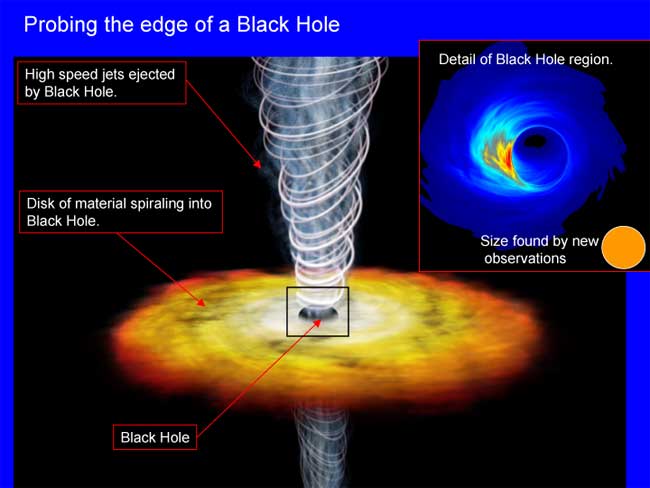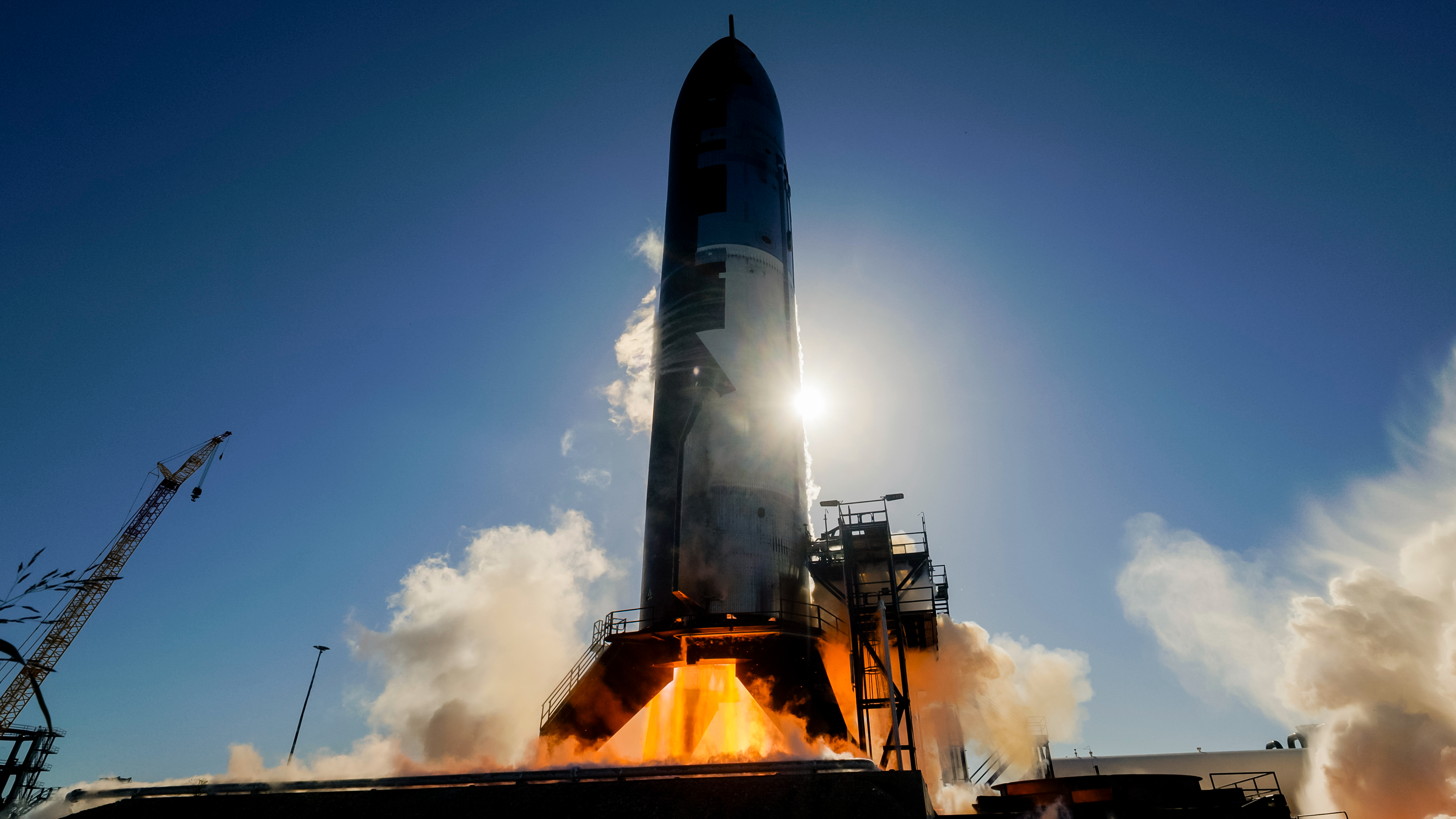Closest Look Yet at Milky Way's Black Hole

If it looks like a black hole, and acts like a black hole,it's probably a black hole.
For a while now scientists have thought a dense, massiveobject lurking at the center of our galaxy is likely a giantblack hole, but they haven't been able to prove it. New observationsoffering the closest view yet of the heart of the Milky Way present strongevidence for the black hole theory, and even hope of finally settling thequestion soon.
By linking a series of radio telescopes around the world,astronomers created a virtual telescope with the resolving power of a singledish the size of the distance between the various sites (about 2,800 miles, or4,500 kilometers). This instrument grabbed an intimate image that probednearly to the Milky Way's black hole's eventhorizon ? the point beyond which nothing, including light, could everescape.
Blessing and a curse
Since our own galaxy's apparent supermassive black hole isthe closest of its kind to us, it offers a unique chance to study how theseobjects behave and affect galaxies.
"This is the best black hole candidate that we haveanywhere in the universe, the best chance we have to observe the kind ofsignatures we would expect around the immediate vicinity of a black hole,"said study leader Sheperd Doeleman of MIT. "One of the problems withlooking at this particular source is that we have to look through our galaxy. It'sa blessing that it's this close, but it's a curse because it's obscured by gasand dust."
In order to bypass the Milky Way's shroud of gas and dust,the researchers looked at 1.3 mm radio light, which escapes the fog better thanlonger-wavelength light. They combined observations taken from observatories inHawaii, Arizona and California in a technique called Very Long BaselineInterferometry (VLBI) to observe the galactic center with some of the highestresolution ever achieved in astronomy ?the equivalent of a baseball seen on thesurface of the moon, 240,000 miles away.
Get the Space.com Newsletter
Breaking space news, the latest updates on rocket launches, skywatching events and more!
The researchers observed a bright source of light known as SagittariusA* ("A-star"), thought to mark a black hole roughly 4 million times themass of the sun. The mass is determined by looking at the effect of thecolossal object on stars that orbit near to the galactic center. The team foundthat Sagittarius A* has a diameter equal to about one-third the distancebetween Earth and the sun, or about 30 million miles (50 million km). Thissmall size indicates the mass in the galactic center is even denser thanprevious measurements found, which supports the idea that the object hiddenthere must be a black hole, because current theories have no other reasonableexplanation for describing so much mass packed into such a small space.
Settling the question
Scientists can't pin down the process responsible for thebright radiation coming from Sagittarius A*, but suggest it could be a powerfuljet of particles accelerated by magnetic fields around the black hole, orradiation pouring out of an accretion disk of matter funneling into the blackhole.
The researchers hope they'll be able to get to the bottom ofthe question, and finally prove that Sagittarius A* is a supermassive blackhole, through future observations made with the same technique.
"We've been working for over a decade now on themachinery and instrumentation to pull this off," Doeleman told SPACE.com."The real beauty of this technique is that now we've shown it can be done.We'll get very good data in the next three to five years and I think some ofthose will tell us if we're seeing some of the signatures we'd expect from ablack hole."
To improve on the images they've already made, the astronomersplan to add even more telescopes around the world, as well as more dishes ateach individual site to boost the signal. They also plan to look in evensmaller wavelength radio light.
"This pioneering paper demonstrates that suchobservations are feasible," said Harvard astrophysicist Avi Loeb, who didnot work on the study. "It also opens up a new window for probing thestructure of space and time near a black hole and testing Einstein's theory of gravity."
The study, funded by the National Science Foundation andconducted at the Arizona Radio Observatory?s Submillimeter Telescope (ARO-SMT)of the University of Arizona, the Combined Array for Research inMillimeter-wave Astronomy (CARMA) in California, and the James Clerk MaxwellTelescope (JCMT) and the Submillimeter Array (SMA) in Hawaii, is detailed inthe Sept. 4 issue of the journal Nature.
- Video - Our Corner of the Cosmos
- Video - Black Hole Blazar Jets
- Video - Black Holes: Warpers of Time and Space
Join our Space Forums to keep talking space on the latest missions, night sky and more! And if you have a news tip, correction or comment, let us know at: community@space.com.

Clara Moskowitz is a science and space writer who joined the Space.com team in 2008 and served as Assistant Managing Editor from 2011 to 2013. Clara has a bachelor's degree in astronomy and physics from Wesleyan University, and a graduate certificate in science writing from the University of California, Santa Cruz. She covers everything from astronomy to human spaceflight and once aced a NASTAR suborbital spaceflight training program for space missions. Clara is currently Associate Editor of Scientific American. To see her latest project is, follow Clara on Twitter.
